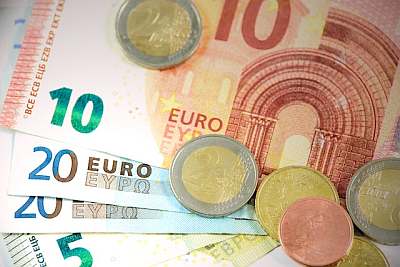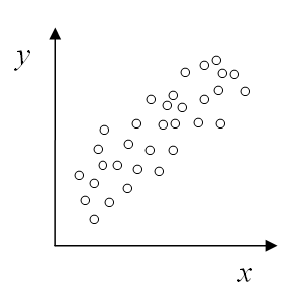Time to Double Your Money Calculator
Instructions: Use this calculator to get shown step-by-step the calculation of the time required to doubling certain initial amount of money \(A_0\). Please provide annual interest rate \(r\) and the type of compounding (yearly, semi-annually, quarterly, monthly, daily or continuously):
Time to Double Money Calculator
This calculator will show all the steps involved in computing the amount of time needed to double an initial amount \(A_0\)) of money. Common wisdom indicates that the higher the interest rate \(r\) you get, the shorter it will take to double your money and that is indeed the case.
It will also depend on whether the compounding occurs more frequently that once a year. Indeed, let \(k\) be the number of times the money is compounded in a year.
For example, for yearly compounding we have \(k = 1\), for bi-yearly compounding we have \(k = 2\), for quarterly compounding we have \(k = 4\), etc.
Time to double compounded discretely
When you compound a certain amount of \(k\) times a year, you have what is called a discrete compounding. For such type of compounding, the amount of money we will have after \(n\) years is
\[ FV = A_0 \left( 1+\frac{r}{k}\right)^{ k \times n} \]So, if we wanted to double our initial amount \(A_0\), we would need to end up with \(2 A_0\) in the account, so that
\[ 2 A_0 = A_0 \left( 1+\frac{r}{k}\right)^{ k \times n} \]and canceling \(A_0\) from both sides of the equation leads to
\[ 2 = \left( 1+\frac{r}{k}\right)^{ k \times n} \]and then applying natural log and solving for \(n\) leads to
\[ n = \frac{\ln 2}{k \left( 1+\frac{r}{k}\right)} \]Time to double compounded continously
Something interesting happens for continuous compounding. Indeed, that case is the same as considering that \(k \to \infty\), in which case the amount of money we have after \(n\) years is (meaning, the future value of our money):
\[ FV = A_0 e^{r \times n} \]So, same as in the discrete compounding case, if we wanted to double our initial amount \(A_0\), we would need to end up with \(2 A_0\) in the account, so that
\[ 2 A_0 = A_0 e^{r \times n} \]and canceling again \(A_0\) from both sides of the equation, we will get
\[ 2 = e^{r \times n} \]and then applying natural log and solving for \(n\) leads to
\[ n = \frac{\ln 2}{r)} \]Observe the very interesting fact that the number of years required to double your initial amount \(A_0\) DOES NOT depend on the initial amount, only on the interest rate \(r\) and the type of compounding.
In other words, doubling $1 or double $1 million will take the same amount of time, assuming the same interest rate.

Example: Calculation of Time needed to double money
Question: How many years you need to wait until you double your money, if your bank offers you a nominal annual rate of 3.5%, which is compounded monthly?
Solution:
We need to compute the amount of time needed to double a given amount \(A_0\)
You have stated that the yearly interest rate is \(r = 0.035\), and the compounding is done monthly.
The future value after \(n\) years is calculated using the following formula:
\[ FV = \displaystyle A_0 \left( 1+\frac{r}{k}\right)^{ k \times n} \]What we want is to double the money, so we need to have \(2 A_0\) as the future value after \(n\) periods. So then we need \[ 2 A_0 = \displaystyle A_0 \left( 1+\frac{r}{k}\right)^{ k \times n} \]
which means that we can cancel \(A_0\) from both sides of the equation, and we need to find \(n\) from the following:
\[ 2 = \displaystyle \left( 1+\frac{r}{k}\right)^{ k \times n} \]so then after applying natural log to both sides and solving for \(n\) leads to:
\[ n = \displaystyle \frac{\ln 2}{12 \ln\left( 1+\frac{0.035}{12}\right)} = \displaystyle \frac{\ln 2}{12 \ln\left( 1+ 0.003\right)} = 19.83 \]Finally, we plug the value we know about the interest rate and compounding period so we get:
Therefore, regardless of the initial amount \(A_0\), the number of years required to double the initial investment for a yearly interest rate of \(r = 0.035\), and with monthly compounding is \( n = 19.83 \) years.




